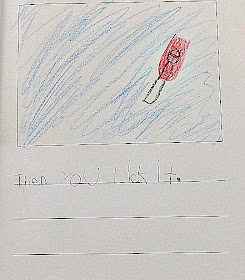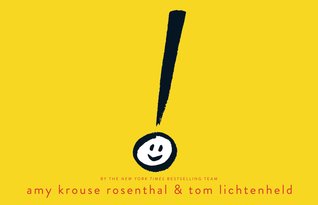I love old fashioned, paper lists that I can cross off when I'm done with something. It helps me bring order to a crazy day and quiet my mind. Once I write something down, my mind is free to let it go, for some reason.
My love of lists is one reason I absolutely loved this post by Rachel Stafford. Rachel was a special education teacher, and used lists very successfully with her students for behavior management. She explains how her approach was to break tasks down into small steps, so there would be no confusion what was expected from her students. She also set positive expectations with students explaining that she couldn't wait to see how many happy faces were on their self-monitored lists. She gave her students the power of the list. She explained that adults do the very same thing. Adults call these lists "to-do" lists- but it's really just a list that anyone can make to help stay focused on what needs to be done each day. Click on the picture below to read her article. It's a great one.
List writing is a wonderful skill for children to learn as they begin to feel comfortable hearing sounds in words and getting those sounds down on paper as letters and eventually words. It's so exciting when children actually see that they can communicate by writing. "List Writing" isn't a genre of writing, but it's a practical way for children to see the importance of knowing how to get what they want to say down on paper neatly, so they can actually READ what they write down- and others can, too. And... it never hurts to remind them that they are in good company, writing lists! Some very important people write lists...
I like to introduce list writing with Frog and Toad's story, The List. I wrote HERE about how I love to use Frog and Toad books for so many things. Now is the time of year I begin reading these stories to my class. The children are ready for stories with some more words/less pictures, and they get the subtle humor in the books.

Here is an overview of the story from Amazon:
- A List: Toad wakes up one morning and decides to write a list of things to do for the day. After writing the list and doing the first few items on it (wake up, eat breakfast, get dressed, and go to Frog's house), he goes over to Frog's house and invites him to take a walk with him. During the walk, while Toad is crossing off "Take walk with Frog," a sudden gust of wind blows away the list. Frog tries to catch the list, but to no avail. As Toad can't remember what else was on the list, he and Frog just sit and do nothing until night falls and Toad suddenly remembers that going to sleep was the last thing on his list, which is what the two friends do.
When I taught my own children writing, we used to always warm up by writing a list of something - even when they were in upper grades. It's a great way to get your mind thinking of different ideas. In fact, I made a list of list ideas- how is that for a list! You could use this list with any age, really. Click on the picture below if you would like a copy.
Here's how the activity looks in kindergarten. After we read the story, I gave a topic to the kids (like farm animals, ice cream flavors, blue things, big things, small things...the topics on the list above!). They turned and talked to a friend about all of the items they could list for that topic.
This sounds easy, but it's actually a very good exercise for the children to have to stay on topic and only list items that would fit the category. I rang a bell after a minute or so and moved onto the next topic, so it was a fast moving activity.
After we practiced a few times, I had to kids go back to their seats to write a few lists of their own.
Some of them even illustrated their lists! Once I ooohed and aaaahed about these illustrations, guess what everyone else started to do?! It was great.
When we teach children to write, we're always trying to think of authentic ways to make writing important for them. During free choice, my children love writing grocery lists on strips of paper I have cut for them. They love taking orders and playing restaurant- (and if I use the REAL waiter/waitress pads, which I also LOVED when I was little, it is even so much better! I got a whole huge pack of these at Sam's Club.).
They love writing down lists for the animals they take care of in the vet center.
They write lists of friends' names when they play school.
When I think of what I want my children to be able to do, to be able to accomplish even as they graduate high school, I want them to be effective communicators, problem solvers, risk takers, and to be able to work well together in groups... THESE are great goals and exit outcomes for any student leaving high school, and these are exactly the skills developed during free choice time in kindergarten.
Play in the classroom is a tangent I often drift off to because I am passionate about play for children ... (HERE is one post I wrote about the importance of PLAY in the classroom, and HERE is a post with more about my Play Every Day Prezi that I made about just that...) It's important that the people who make educational decisions, but are not in the classroom, understand its essential role in children's lives.

I hope you have a wonderful week!

























































